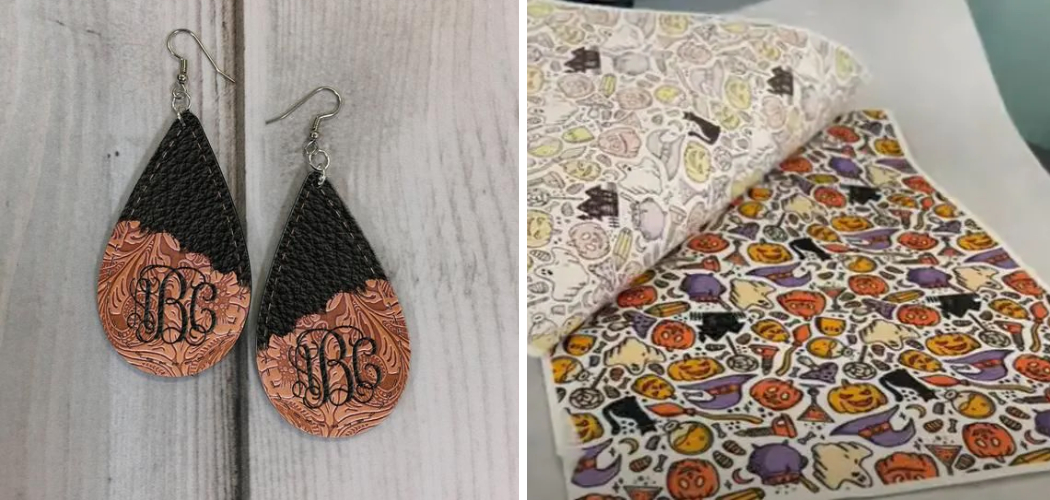Sublimation is a great way to customize and personalize faux leather items with vibrant, permanent designs. Sublimation offers a wide range of exciting design possibilities that allow you to create truly unique products.
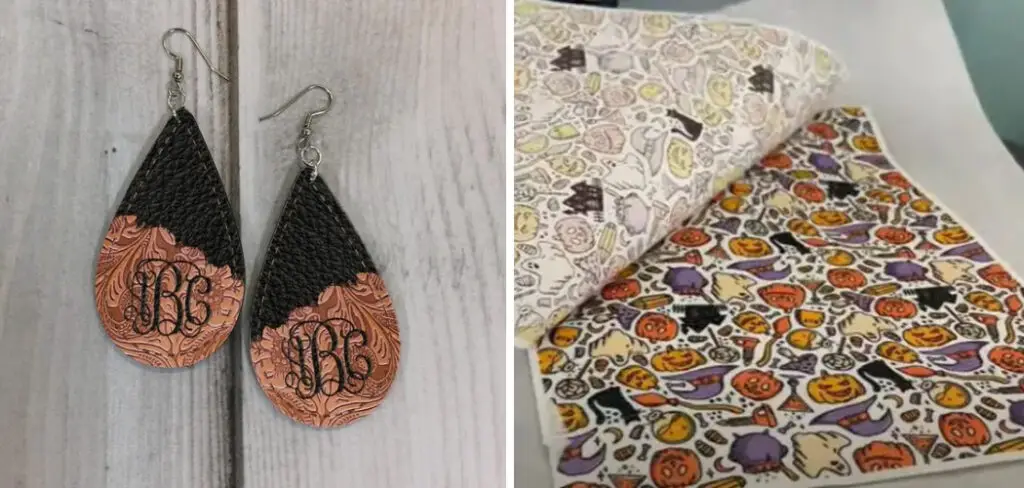
It’s also an inexpensive method compared to other printing processes, as it uses heat transfer instead of ink. With the right supplies and a few simple steps, anyone can learn to sublimate on faux leather and start creating stunning designs.
Faux leather is an economical and versatile fabric choice for sublimation. The faux leather material has a polyester coating that can absorb the ink from the sublimation process, allowing for vivid, high-quality prints with excellent durability.
Sublimating on faux leather also eliminates the need to apply separate sealants after printing since its closed cell structure helps the dye to remain in place. In this blog post, You will learn in detail how to sublimate on faux leather.
Step by Step Processes for How to Sublimate on Faux Leather
Step 1: Inspect the Faux Leather
Before attempting to sublimate on faux leather, inspect the fabric and check for any signs of damage. Make sure it is smooth and free from tears or blemishes. If you are using a heat press, pre-heat it according to the manufacturer’s instructions. You may also need to use a Teflon sheet to protect the faux leather from scorching or burning.
Step 2: Print Your Image
You can use an inkjet printer or laser printer for this step. Make sure you use special sublimation papers, which are specially designed for this kind of printing process. Place the faux leather onto your heat press and set the temperature according to the manufacturer’s instructions. Make sure to place a non-stick sheet on top of your faux leather before pressing it.
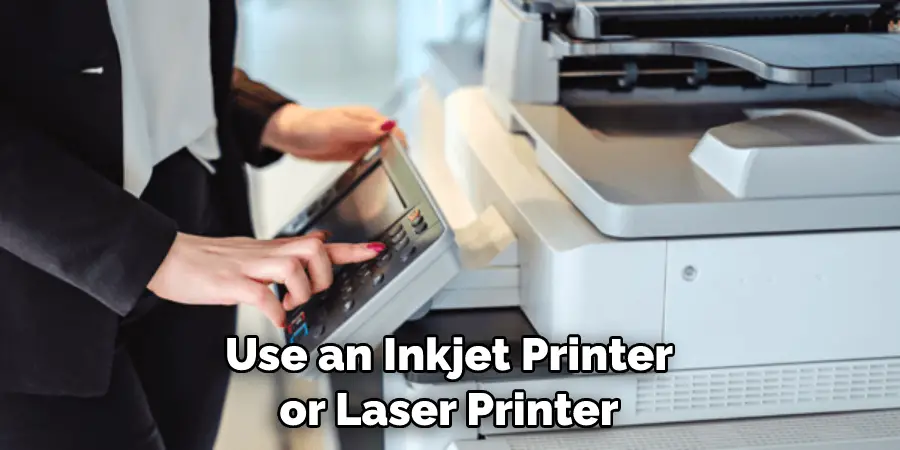
Step 3: Peel Away the Foil
Once you have pressed the faux leather, carefully peel away any foil that may be present. This will reveal the image that you have printed. You can use a craft knife or scissors to cut out your image from the faux leather. Make sure all edges are smooth and even.
Step 4: Heat Seal Your Design
If you wish, you can heat seal your design with a heat press to ensure that it does not come off. Make sure to use a high-temperature setting and follow the manufacturer’s instructions. You can apply a sealant or varnish over your design if you wish. This will help protect it against fading or other damage caused by exposure to sunlight, water, dust, or dirt.
Step 5: Let It Dry
Allow the varnish or sealant to dry completely before using your faux leather item. Once the faux leather is completely dry, you can enjoy your sublimated design! You can use it in a variety of ways, from creating unique fashion accessories to decorating furniture or other items.
By following these steps, you can easily learn to sublimate on faux leather and create beautiful pieces of art that will last for years. It’s a great way to add an extra layer of sophistication to any project.
Safety Tips for How to Sublimate on Faux Leather
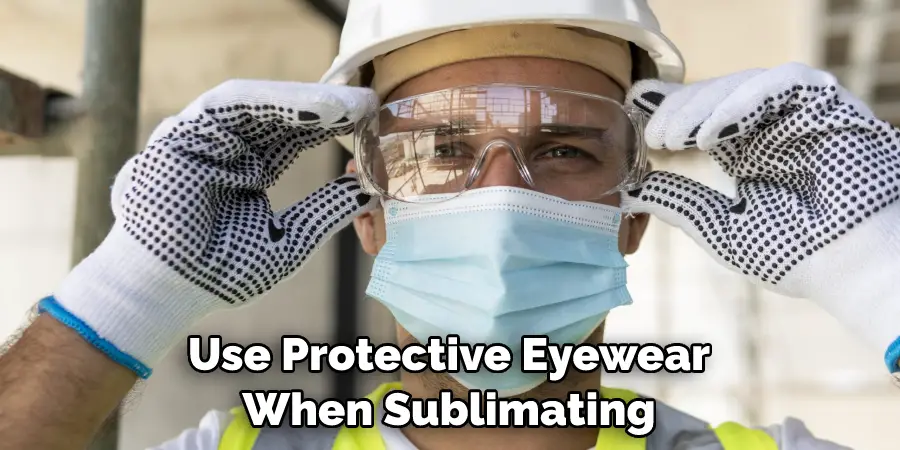
- Use protective eyewear when sublimating faux leather. The heat from the sublimation process is intense and can cause eye injury if exposed to directly.
- Wear a dust mask to protect your lungs from any chemicals released during the sublimation process as well as any dust particles that may be present in the faux leather.
- Wear an apron when sublimating the faux leather in order to avoid getting burned or scalded by hot steam or heat that may be released during the process.
- Make sure your work area is well ventilated as some of the fumes and vapors from the sublimation process can be toxic if inhaled.
- Keep the heat press flat, and ensure the faux leather is firmly pressed against the heating element before beginning the process.
- Monitor the temperature and time of the sublimation process closely in order to avoid any potential damage to your materials or burning yourself with hot steam or heat that may be released.
- Once the sublimation process is finished, allow the material to cool down before handling it or moving it from the heat press. This will help prevent any potential burns from hot steam and heat released during the process.
Following these safety tips will help ensure that sublimation on faux leather is done safely, efficiently, and successfully.
What Type of Heat Press is Best for Sublimating on Faux Leather?
When sublimating on faux leather, you will need a heat press that is specifically designed for working with fabric. A regular flatbed heat press can be used, but the pressure must be adjusted to accommodate the material. A clam-style or swing-away press works best as it allows easy access to the material and more even pressure across the entire surface.
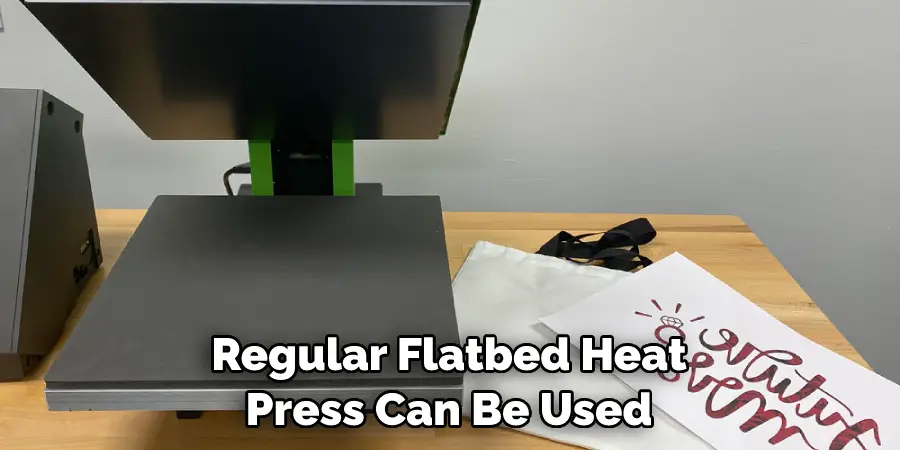
The temperature should also be adjusted to a lower setting because faux leather is more delicate than fabric, and a higher heat may cause it to burn or become damaged. It’s best to start with a low temperature and adjust as necessary.
The best way to ensure your designs come out looking crisp and colorful on faux leather is to use a medium-pressure, even heat application. With this method, it’s important to keep the heat press closed for the entire time and make sure that the design is centered on the material. You also need to be careful when removing your project from the press, as it can still be very hot after sublimation.
Do the Temperature and Time Need to Sublimate Vary Depending on the Thickness of the Faux Leather?
Yes, the temperature and time needed to sublimate on faux leather depends on the material’s thickness. Thicker materials require more time and a higher temperature to achieve optimal results. For thin faux leather pieces, use an initial heat press setting of 350 degrees Fahrenheit for 40-45 seconds.
If desired results are not achieved, try increasing the time and temperature by 5-10 degrees Fahrenheit. For thicker faux leather pieces, use an initial heat press setting of 375-400 degrees Fahrenheit for 45-50 seconds.
Again, if desired results are not achieved, try increasing the time and temperature by 5-10 degrees Fahrenheit. Too much heat can damage or burn the faux leather, so testing on a piece of scrap material is important before sublimating it onto the final product. Additionally, you should always make sure that your heat press is calibrated correctly and not running too hot.
What is the Best Way to Clean Up After Sublimating on Faux Leather?
Once you have finished sublimating on faux leather, it is important to clean up the area. You are not recommended to leave any adhesive residue or other debris behind. To do this, first, make sure that the faux leather has completely cooled down before attempting to clean it up.
After it has cooled, use a cloth dampened with warm water and a mild detergent to gently remove any adhesive or other debris from the faux leather. Make sure to be gentle, as you don’t want to damage the faux leather. You can also use a soft-bristled brush to help you get into tight areas or around corners.
Once you have removed all of the adhesive and debris, you can use a clean cloth dampened with warm water to wipe down the faux leather. This will help remove any remaining residue. Make sure to dry the faux leather completely before moving on to your next project or storing it away.
Finally, you should store the faux leather in a cool, dark place away from direct sunlight and other sources of heat. This will help keep it in the best condition for a longer period of time.
What Are Some Potential Problems That Can Occur When Sublimating on Faux Leather?
When sublimating on faux leather, it is important to know what potential problems you may encounter so that you can take steps to prevent them. One common problem when sublimating on faux leather is image distortion.
This occurs when the heat applied during the transfer causes the fabric to shrink or warp, resulting in an altered image. To prevent this, make sure you use the correct temperature and time settings for the substrate and transfer paper used.
Another potential problem is the toner not bonding properly with the faux leather. Without a proper bond, an image may easily flake off after being applied. To avoid this issue, you should use a pre-treatment solution specifically designed for faux leather before sublimation.
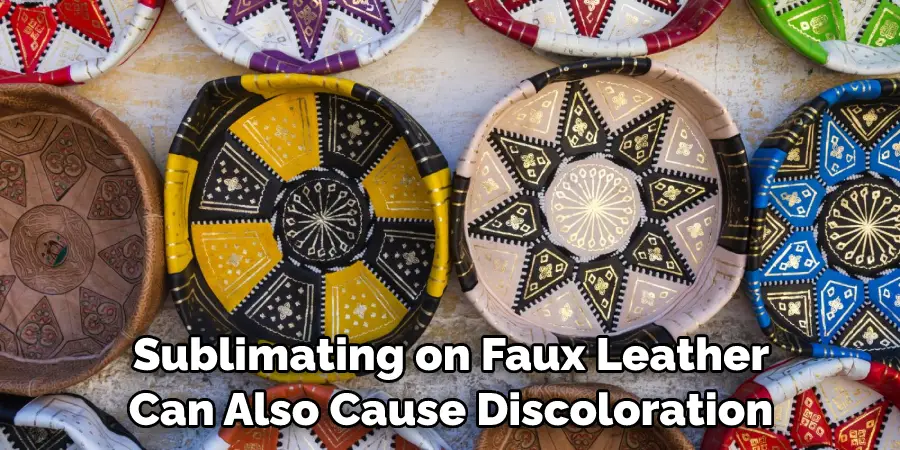
Sublimating on faux leather can also cause discoloration or fading over time due to UV exposure. To avoid this, you should use a clear topcoat or sealant after the transfer is complete, as it will protect your design from the sun’s rays and extend its life.
Conclusion
One of the primary disadvantages of sublimating on faux leather is that the result may not be as vibrant or durable. Sublimation requires precise temperatures and pressure settings, which can be difficult to achieve with faux leather. Also, faux leather may have a different texture or finish because it is not a natural material. This can cause images to appear distorted or off-colored after sublimation rather than the desired vibrant colors.
In conclusion, sublimating on faux leather can be a great way to create unique items that have a high-end look and feel. Proper knowledge and safety precautions make it possible to sublimate onto this material successfully. I hope this article has been beneficial for learning how to sublimate on faux leather. Make Sure the precautionary measures are followed chronologically.

